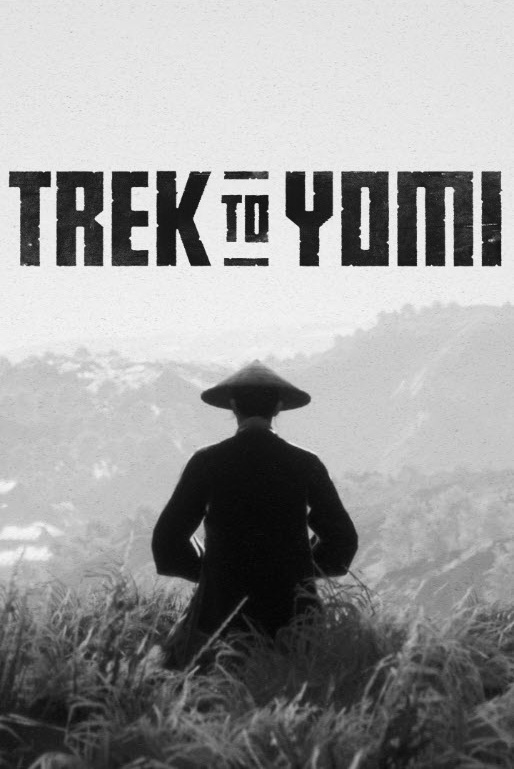Trek to Yomi
Developer: Flying Wild Hog
Publisher: Devolver Digital
Platforms: PC (Reviewed), PlayStation 4, PlayStation 5, Xbox One, Xbox Series X
Release Date: 05 May 2022
Price: $28.95 AUD / $19.99 USD – Available Here
Overview
With the undeniable success of Ghost of Tsushima, we’ve been seeing more western-developed games with Asian themes and backgrounds lately; more precisely, games focused on the rich Chinese and Japanese history, folklore, and, of course, martial arts. The recently released SIFU -an excellent kung fu-based brawler- is a very good example of this. The newest game following this trend is Trek to Yomi. A -very- cinematic action game inspired by the celebrated filmmaker Akira Kurosawa and developed by Polish studio Flying Wild Hog.
Story
Trek to Yomi is set in Japan during the Edo period (Sometime between the 16th and 19th century). A young boy named Hiroki trains under his master Sanjuro in order to become a samurai. Unexpectedly, thieves invade the village, killing everyone in sight mercilessly. Hiroki is able enough with a sword to hold his own and help drive off some bandits. Upon confronting Kagerou, the leader of the thieves, Hiroki is completely powerless. Luckily for Hiroki, Sanjuro steps in in the nick of time and is able to slay Kagerou although at the cost of his own life. Several years later, Hiroki, now an adult, is the head of samurai in the village. A new group of bandits has been causing trouble lately. Fearing that his village may be the next to be invaded, and also blinded by anger and pride, Hiroki assembles a group of samurai to take the fight to the thieves. This sets Hiroki on a path of grief and revenge that will take him to Yomi itself; the land of the dead and darkness.
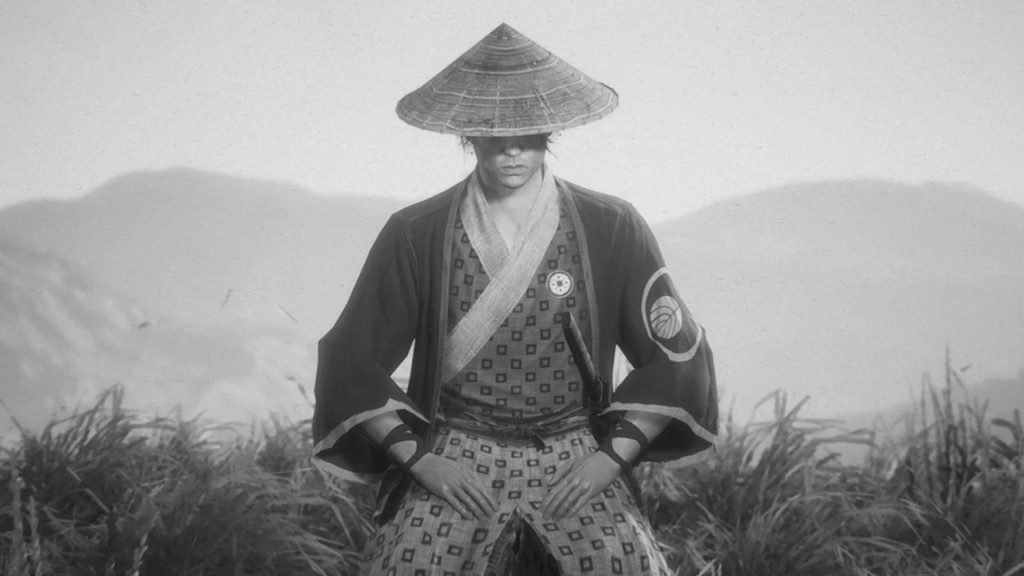
Despite its clichéd premise, Trek to Yomi tries its best to capture the feeling of many of Kurosawa’s movies. A lot is left for the player to imagine or simply feel. Even then, Trek to Yomi doesn’t do a very good job of balancing the story along the length of the game. There’s a lot of very good Japanese voice-acting in the beginning. After that, the dialogues and story bits grow more and more sparse. This wouldn’t be much of a problem if the gameplay held up better.
Gameplay
While playing the introduction as young Hiroki, the game basics are explained well and fast. The player is able to explore the environments in a third person view with mostly fixed camera angles, think PlayStation One’s Resident Evil titles, or more aptly, Onimusha. There are also optional corners and rooms, where you can collect artifacts that tell us a bit more about how people lived in that era in Japan, such as drawings of Shinto gods and amulets; this is a very neat feature for those interested in Japanese mythology as there is a good amount of these artifacts to find, each containing a brief but insightful description. You can also find new skills in the form of new sword combinations, defensive maneuvers, and ammunition for your ranged weapons. There are even alternate paths that allow you to avoid engaging in direct conflict with enemies by setting off traps and dispatching them all at once.
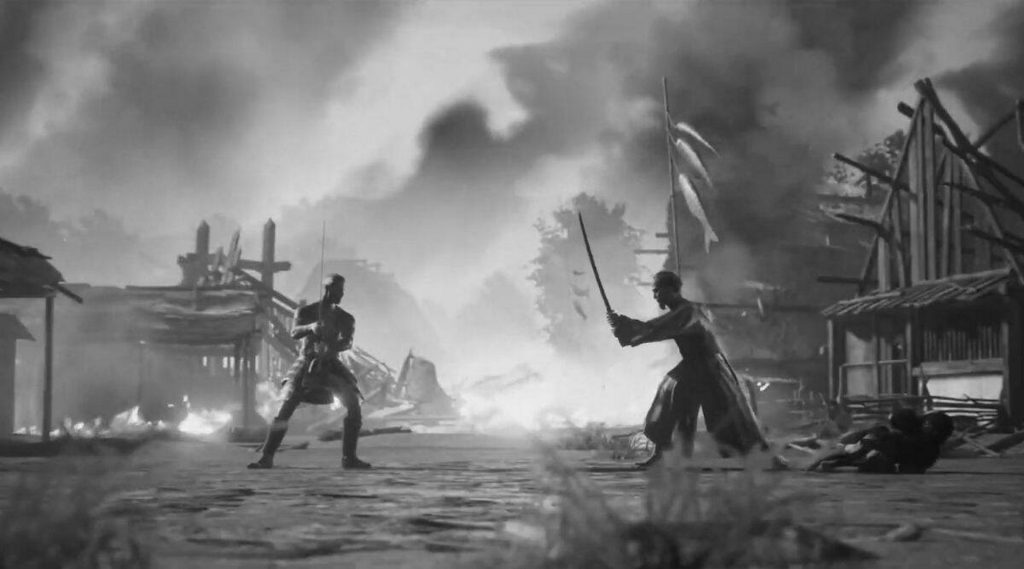
While in combat, the camera will take on a side view, like in a 2D action game. This is all seamlessly implemented, meaning that there are no transitions between camera angles. Everything is done in a way to make the game feel as fast and easily digestible as possible. There are four difficulty options, with the final and hardest setting being locked until you finish the game once. I found the normal mode to be too easy, so this review is based on the hard setting.
The game’s controls are responsive, and the combat is fast and fun enough for the movie-like experience that the game proposes. You can attack using your sword or a ranged weapon, block, and also parry enemies’ attacks. Sword strikes consume your stamina bar, as does blocking. Parrying and countering, on the other hand, won’t consume stamina and will also replenish some of your health if you happen to kill an enemy with a counter. You have a large enough window to parry which makes the game very welcoming to even those inexperienced in action games. Later on, you’ll discover skills that can stun enemies, allowing you to perform finishing moves that also restore health; these mechanics are crucial to survive in the game as they are your only way to replenish your health besides save points.
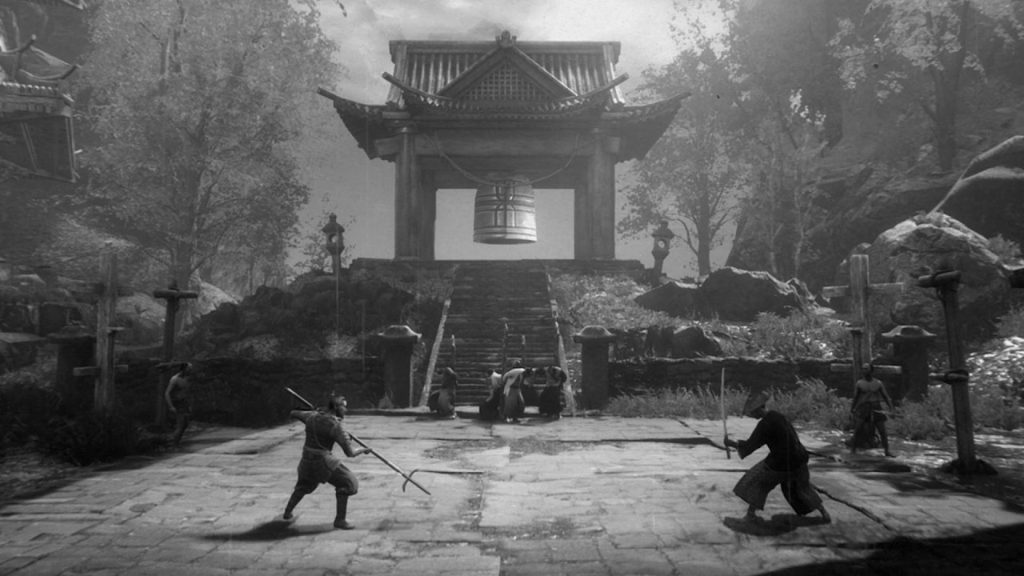
Unfortunately, there isn’t much gameplay variety as the introduction would make you believe. Towards the second half of the game, which is already fairly short, you’re basically left with moving forward, and cutting down a limited variety of enemies while you collect more artifacts and skills. There are also some inane puzzles that involve aligning some Kanji characters in a wheel. These puzzles are so ridiculously easy that you’d think that they’d at least have some kind of meaning. I think that they probably do, but the game won’t tell you what those Kanji mean. The highlight of the gameplay, in my opinion, are the bosses; they’ll certainly provide a challenge and break the monotony a bit, especially since the rest of the game is relatively easy and won’t prepare you well enough for them.
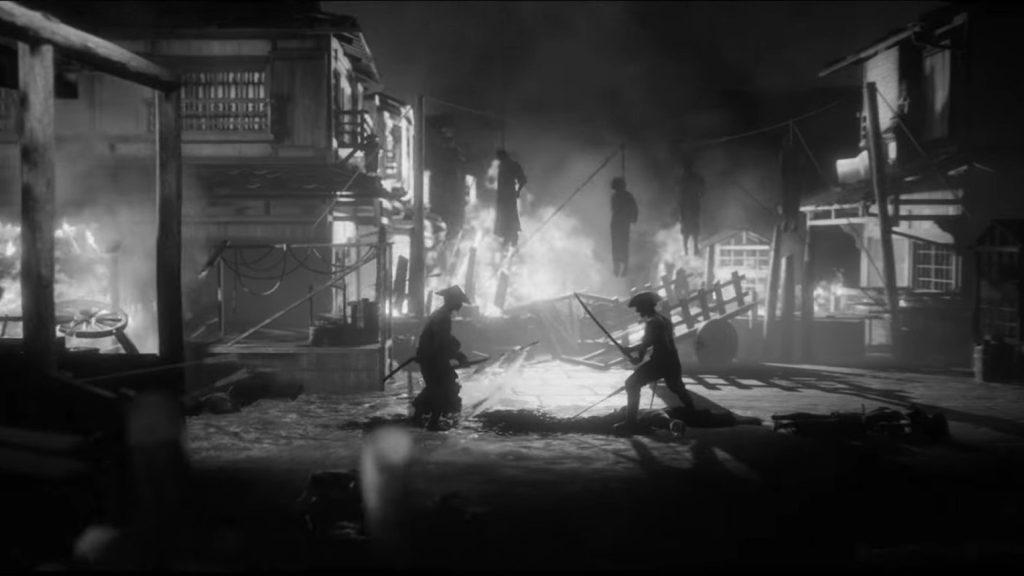
Visuals
Trek to Yomi’s visuals are presented entirely in a black and white, letter-boxed way, and with a lot of video filters to deliver the feel and look of an old movie. What it lacks in high-production values, it more than makes up for it with its graphical artistry. The game uses a now -sadly- outdated way of presentation that uses semi-static camera angles, like those seem in early Onimusha games, except in Trek to Yomi everything is rendered in real-time with no use of pre-rendered images. Every screen is full of life and details. The characters models are nothing fantastic, but fulfill their purpose. All these features combine to make Trek to Yomi a veritable “playable movie” in the most essential meaning of the expression.
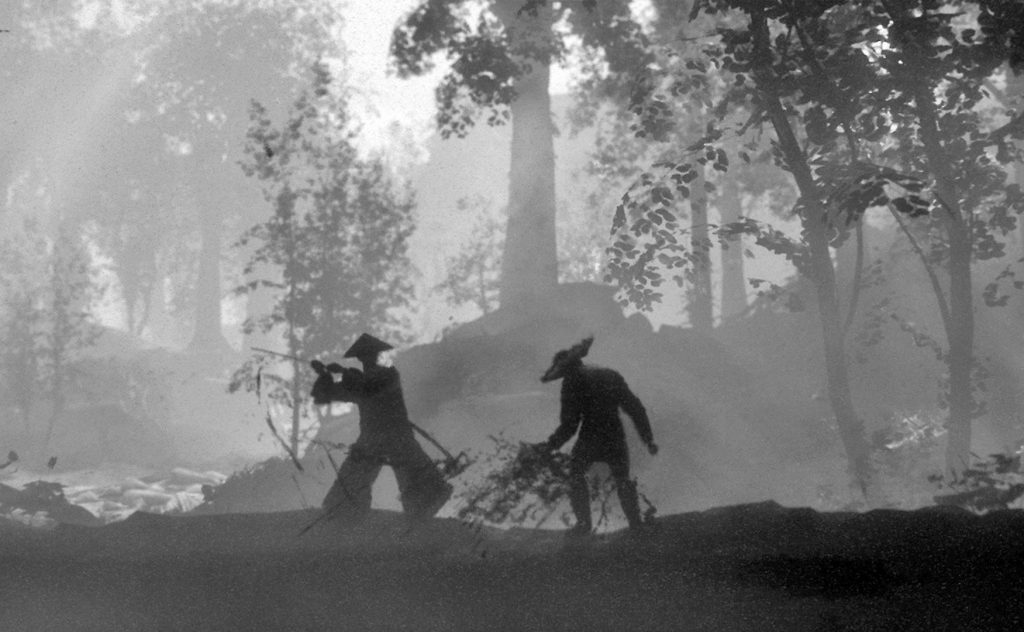
Audio
The soundtrack, much like how it’s presented in Ghost of Tsushima, comprises traditional Japanese instruments, ambient sounds such as rain falling, and the sounds of swords clashing or meeting flesh. A special mention goes to the quality of the Japanese voice-acting; the dialogues feel natural and serious, fitting of the game’s themes. Screams and cries for help from dying villagers are so believable it’s frightening.
Overall
Despite its shortcomings, I had a good time with Trek to Yomi. The presentation alone is worth the price of admission, and the combat works much better than what I was anticipating. Ultimately, the lack of varied gameplay and an enticing story holds back what is otherwise a treat to the senses.
Capsule Computers review guidelines can be found here.


